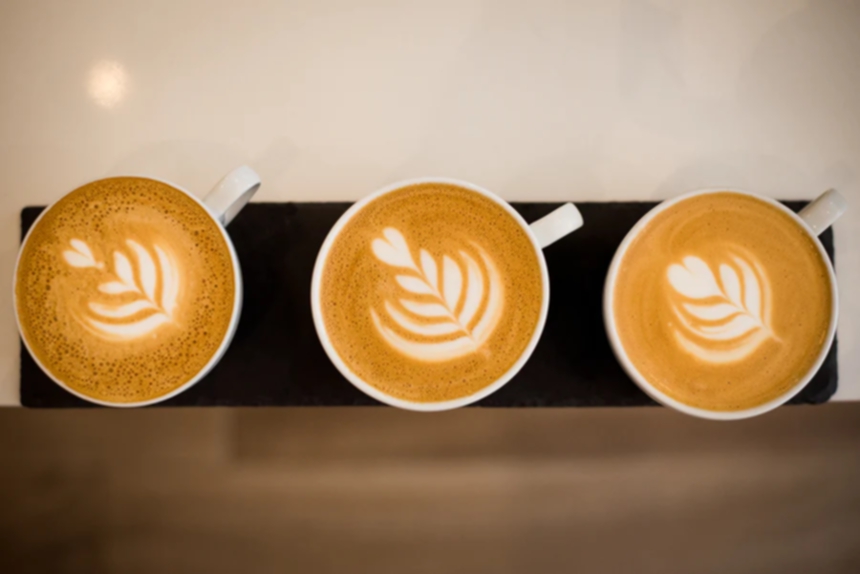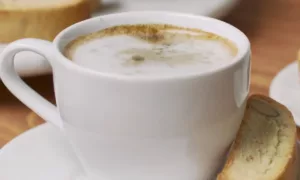The Artistry Of Latte Art: Crafting Beauty In Your Coffee Cup

In the world of coffee, where flavors and aromas often take center stage, there exists a unique art form that marries aesthetics with the daily ritual of coffee consumption: latte art. The delicate designs adorning the crema of a well-poured latte or cappuccino transform a simple beverage into an exquisite canvas, capturing the imagination of both baristas and coffee enthusiasts. This article delves into the enchanting world of latte art, from its origins and techniques to the creative possibilities it offers and its role in the evolving coffee culture.
Section 1: The Origins and Evolution of Latte Art
1.1. Birth in Italy: Cappuccino's Early Days
The roots of latte art can be traced back to Italy, where cappuccino, a classic espresso-based drink adorned with foamy milk, became the canvas for early experiments in coffee artistry. Initially, these designs were simple, with baristas using the contrast between dark espresso and white milk foam to create basic patterns.
A latte is a mild and creamy coffee drink consisting of espresso and steamed milk, with a small amount of milk foam on top. A standard single shot of espresso contains approximately 63 milligrams of caffeine, while a double shot contains around 126 milligrams. In a typical 12-ounce (355 ml) latte, one or two shots of espresso are used. Therefore, a single-shot latte contains roughly 63 milligrams of caffeine, and a double-shot latte contains approximately 126 milligrams. However, these values can vary depending on the coffee shop's recipe and serving size. If you want a more in-depth look at the caffeine content of a latte, use an online caffeine calculator.
1.2. Espresso Meets Creativity
As espresso culture spread globally, so did the art of pouring milk. Baristas began pushing the boundaries of their craft, transforming frothy milk into intricate patterns, shapes, and even miniature works of art. The fusion of espresso and artistry gave birth to the latte art we know today.
Section 2: The Foundations of Latte Art
2.1. Espresso and Milk: The Perfect Duo
Latte art revolves around the harmonious combination of two fundamental elements: espresso and steamed milk. Espresso provides the rich base, while steamed milk's creamy texture and microfoam create the canvas for artistic expression.
2.2. Steaming and Frothing Milk
The key to successful latte art lies in the mastery of milk frothing. Baristas aim to create a velvety, microfoam texture by introducing steam into the milk. This process involves precise temperature control and aeration to achieve the desired consistency.
Section 3: The Techniques of Latte Art
3.1. The Heart
The heart is one of the simplest and most iconic latte art designs. It involves pouring frothed milk in a steady, central stream, allowing it to create a heart shape on the surface of the espresso. This pattern is a symbol of barista expertise and is often a starting point for latte art novices.
3.2. The Rosetta
The Rosetta is a classic and elegant design that resembles a leafy vine or fern. To create a Rosetta, baristas pour the milk in a gentle zigzag motion while gradually moving the pitcher back and forth. This technique forms delicate, fern-like patterns.
3.3. The Tulip
Tulip latte art showcases a series of layered, stacked hearts or other shapes, resulting in a tulip-like appearance. Achieving this design requires controlled pouring and a steady hand to layer the shapes neatly.
3.4. The Swan and Beyond
Advanced latte artists often experiment with more intricate designs, such as swans, animals, and even portraits. These creations demand exceptional skill, precision, and an acute understanding of milk texture and pouring techniques.
Section 4: Latte Art and the Coffee Culture
4.1. Cafe Aesthetics and Customer Experience
In today's competitive coffee industry, latte art plays a significant role in elevating the cafe experience. Artfully crafted lattes not only please the palate but also delight the eyes, enhancing the overall ambiance and customer satisfaction.
4.2. Barista Pride and Identity
Latte art has become a source of pride and identity for baristas worldwide. It allows them to showcase their skills, creativity, and dedication to their craft. Competitions and events, such as the World Latte Art Championship, highlight the talent and artistry within the barista community.
Macchiato and latte are distinct coffee beverages with notable differences in flavor, composition, and preparation.
A macchiato, meaning "stained" or "spotted" in Italian, typically consists of a single or double shot of espresso "stained" with a small amount of frothy milk. This results in a bold and intense coffee flavor with a hint of creaminess, often served in smaller quantities.
On the other hand, a latte, short for "caffè latte" in Italian, features a much larger proportion of steamed milk to espresso. It's a milder and creamier drink with a rich coffee flavor, topped with a layer of milk foam.
In summary, macchiatos are known for their strong espresso-centric taste with a touch of milk, while lattes are characterized by their creamy and gentle coffee flavor due to the significant milk content.
Section 5: The Science Behind Latte Art
5.1. Surface Tension and Crema Interaction
Latte art's success relies on the interaction between the crema (the golden layer of espresso) and the milk foam. The crema's surface tension supports the milk foam, allowing it to create distinct patterns on the coffee's surface.
5.2. Milk Temperature and Pouring Speed
The temperature of the milk and the speed at which it's poured are critical factors in latte art creation. Milk that's too hot or poured too quickly can disrupt the desired patterns, while cooler milk and controlled pouring allow for precise designs.
Section 6: The Future of Latte Art
6.1. Technological Advancements
Innovations in coffee machines and milk frothers continue to push the boundaries of latte art. Some espresso machines now feature programmable pouring patterns, allowing for consistent and intricate designs.
6.2. Sustainability and Latte Art
As the coffee industry embraces sustainability, there's a growing interest in eco-friendly latte art practices. Baristas are exploring plant-based milk alternatives, such as oat and almond milk, which not only cater to diverse dietary preferences but also offer new textural possibilities for latte art.
Conclusion
Latte art is a captivating blend of tradition, creativity, and science that enriches the coffee experience. It's a testament to the enduring fascination with coffee, transforming it from a mere beverage into an artistic expression. As coffee culture continues to evolve, latte art remains a symbol of the passion and dedication of baristas worldwide, reminding us that beauty can be found in the smallest details, even in the daily ritual of sipping a latte.


